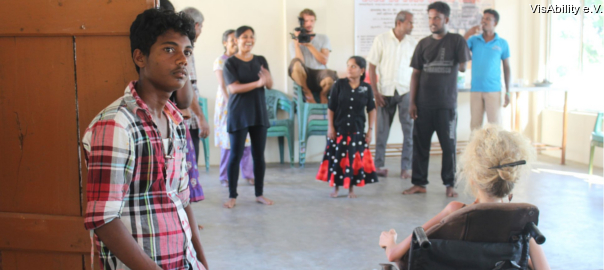“This is the first time that I see Batticaloa….actually it is the first time that I have left my village” said 30 year-old Pushparani while the group was taken to the Gandhi Park in town for a mixed-abled dance performance in public. The whole way, she pressed her nose against the window of the mini-van and tried to absorb as much as possible. “Do I look nice?” she asked VisAbility-Team member Helena Marambio and straightened her clothes before she got off the van. The story of Pushparani is one of many that VisAblity got to know during its work in Sri Lanka. Pushparani is of small stature and limps. When she arrived to the workshops, she was scared, insecure and did not want to get in contact with anybody during the mixed-abled dance workshop. She needed time to open up, to trust other participants and the VisAbility-Team. Former experiences, especially with unknown men in public, who touched her against her will due to her small stature, made her very vulnerable. She felt uncomfortable in her role as an eye-catcher due to her physical appearance. However, after some days of work with the choreographers Gerda König and Mahesh Umagiliya, she was able to present herself as a self-confident woman to the public. “I could never have imagined me dancing in front of so many people” she recognized in a conversation later. “Before, people were staring at me, they were whispering behind my back. And all I wanted was to hide from the world. Now I am not afraid anymore.”
Overcoming the past
The work in Batticaloa was the most challenging one for VisAbility – the former conflict had left deep marks and wounds in both ethnic groups. VisAbility´s Sinhalese team members were the first to recognize the underlying tensions and feelings when they got engaged with a group solely composed of Tamils. Especially during the first days of the mixed-abled dance workshop, they faced moments of mistrust. The approximation process also caused several discussions among the Tamil participants themselves – some of them needed more time to calmly deal with the situation. The overall spirit changed gradually as the choreographers Gerda König and Mahesh Umagiliya incorporated more time for conversations in their workshop. Moreover, sharing the accommodation and food among the VisAbility-Team and participants supported stimulating change of their mind-sets.
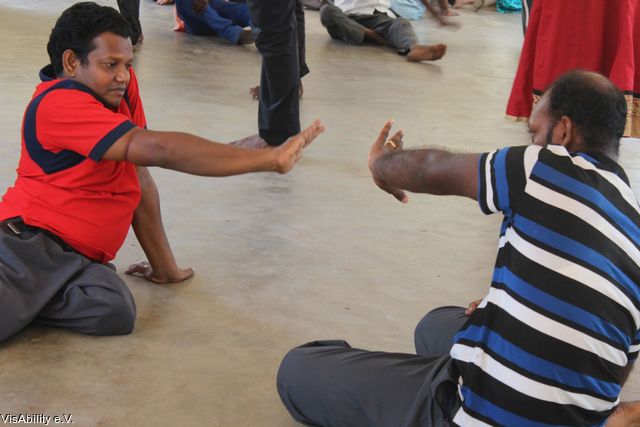
Several participants admitted that they had never personally met a Sinhalese before, that they had never had a chance to pass time together and to talk to each other in a peaceful manner. Some of them pointed out that they had kept memories and stories about Sinhalese people related to the war, which contain the rift within Sri Lankan society. Others realized the impact of the media on their perceptions. The underlying feelings of disadvantage and injustice were also expressed in another way: Tamil people with disabilities thought that they would receive less support (financial aid, facilities) from the government than Sinhalese people would. However, based on the research on the previous three regions (in Anuradhapura, Polonnaruwa and Ampara) by the Disability Rights Coordinator Helena Marambio and the legal advisor Nirma Karunarathna, they could convince the participants from the opposite.
“What can I learn here?”
While the group of participants of the mixed-abled dance workshop was the smallest, it was also the most difficult one. Apart from the general tension between the ethnic groups, participants struggled with overcoming deeply rooted devaluation and rejection by society. Moreover, they needed time to engage themselves with a different approach of empowerment through the mixed-abled dance.
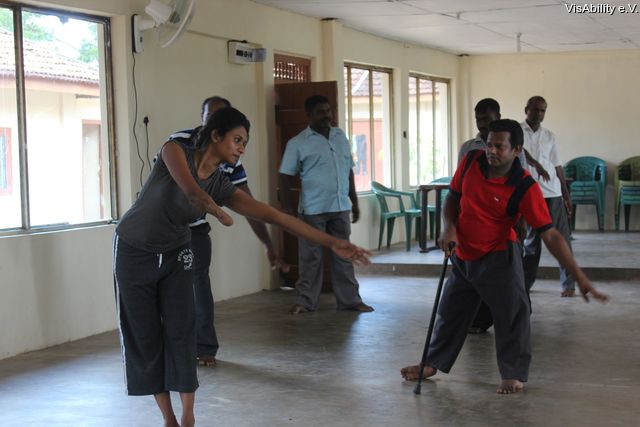
One example is Sudeshwaran, who asked, by the end of the first day: “What can I learn here?” Most of the time, he had observed the group from the corner of the room. Despite several attempts by the choreographers and two dance assistants, he did not want to participate much. Over the time though, he came out of his shell – his facial expression became friendlier, he started to smile and was able to fit in with the group. Moreover, he turned anger into kindness. Against all odds at the start, he became one of the strongest dancers with disabilities. During an interview with Sudeshwaran, VisAbility got to know his story: He had an accident and lost his forearm when he was 9 years old. Yet, if help were provided more quickly, doctors would have been able to treat him successfully. Still, at the age of 25, he was struggling to accept the situation. Despite this difficult process, Sudeshwaran realized that he had become more positive, motivated and stronger after the project.
“I have never seen anything like that before”
The performance at the Gandhi Park next to the river in town was quite successful. Some choreographic elements involved artistic plays including a detaching act of the prosthesis from some of the participants.
The audience was impressed by firm and self-confident movements: “I have never seen anything like that before,” a woman admitted. Another wanted to know if her son with disabilities could take part in the project. She was impressed by the open and uninhibited way of working in a mixed-abled team. Moreover, the police officer, who was in charge of the street closure for the performance, stressed the need to make the real abilities of people with disabilities more visible for society. During the performance, journalists took pictures and interviewed the choreographers later.
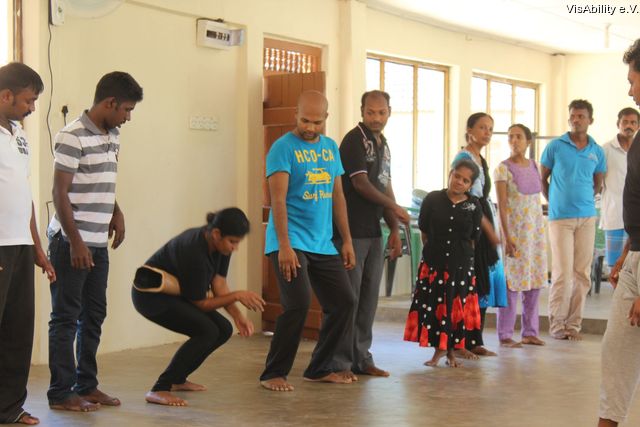
Flexible thinking
The Disability Rights Workshop in Batticaloa was attended by the highest number of participants (over 70 people). As in previous regions, VisAbility undertook a survey with people with disabilities before the start, to get a better sense of their rights knowledge and general awareness about the aids and facilities provided by the government.
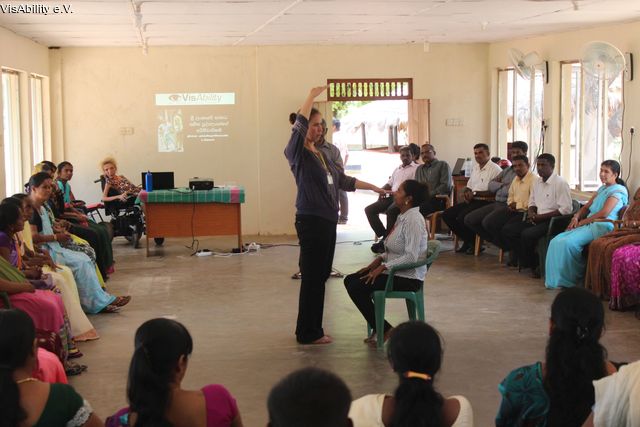
Due to the mixture of the group (participants with disabilities, family members, social welfare officers and NGO staff), the Disability Rights Workshop incorporated a session on attitudes and behaviors of society and institutional staff towards people with disabilities. The audience was given practical advice on how, for example, to approach people in wheelchairs or people with different body shapes. The workshop sought to stimulate flexible thinking and the ability to adapt to “new” situations without hesitation or fear.
